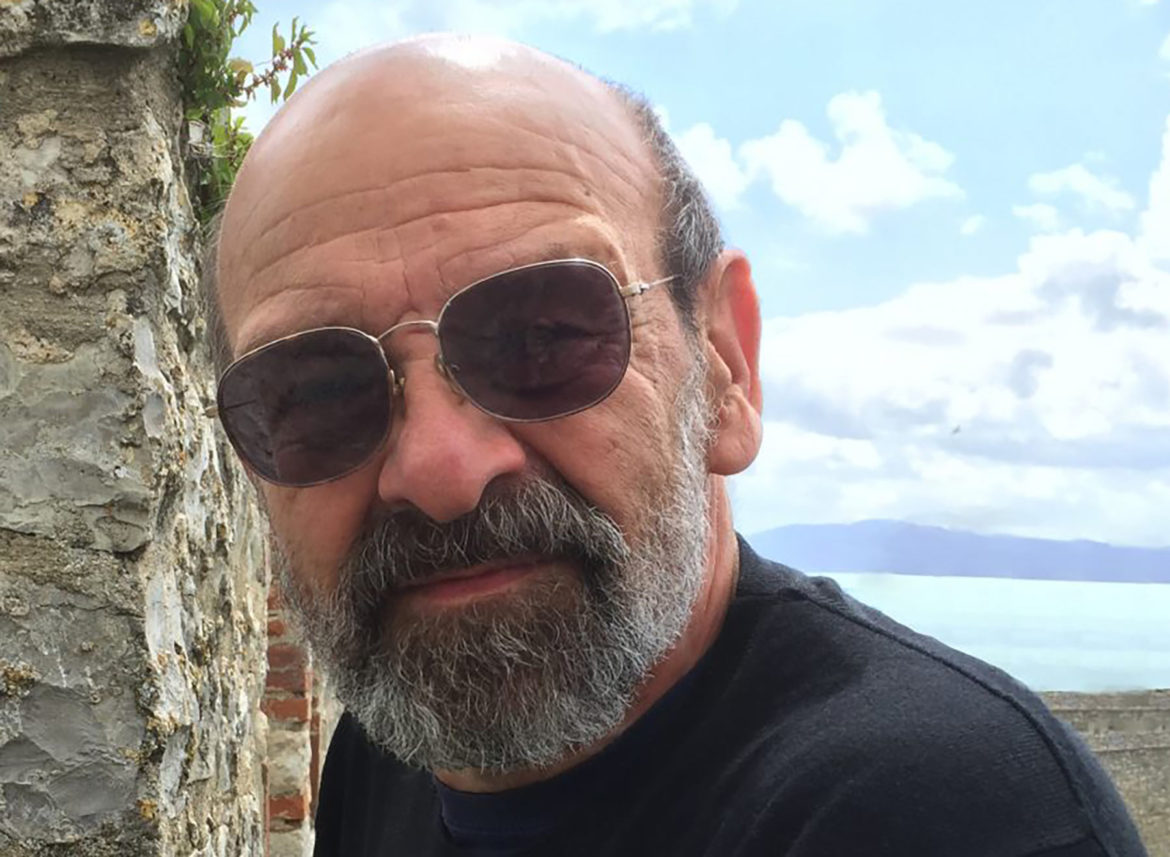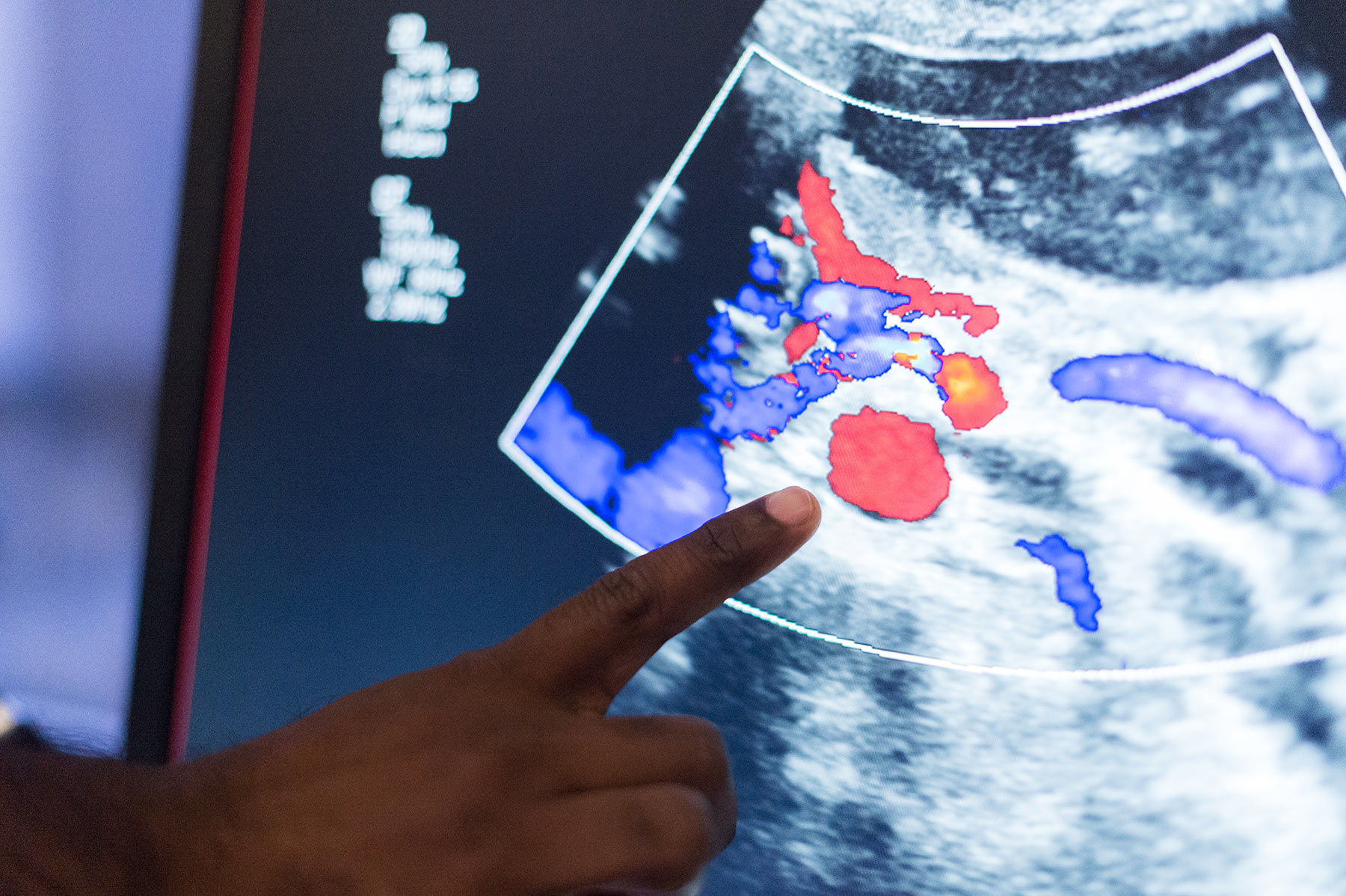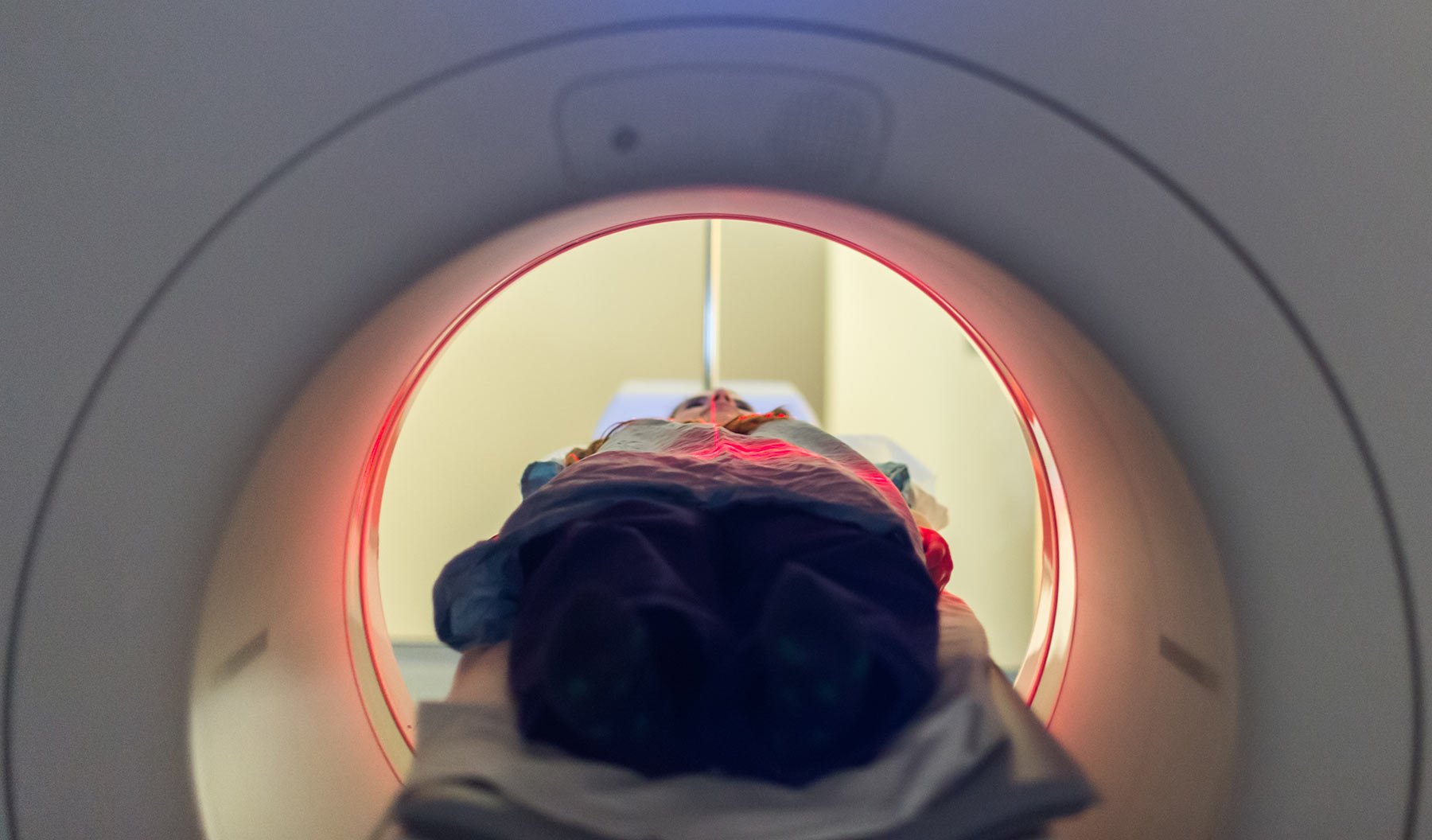Written by George Beker who was diagnosed with colorectal cancer in 2012. Thanks to UVA Radiology, a “look inside” caught his cancer early, helped him avoid unnecessary surgery, and continues to give him peace of mind.
George’s Story:
Beginning with Bad News
Allow me to tell you a story.
In early 2012, UVA radiologists found colorectal cancer (CRC) in my gut using a CT scanner. UVA surgeon, Charlie Friel, removed a Stage I tumor. Happily, there was no indication of any other involvement. It should have ended there.
Unfortunately, a chest X-ray almost two years later showed two CRC mets (malignant growths), one in each lung. Guided by follow-up CT scans, Dr. Christine Lau used video-assisted thoracoscopic surgery (VATS) to wedge out the met on the right side. A week later, again using VATS, she removed half a lobe on the left side. I had an almost immediate and painless recovery each time – amazing. Then 6 months of tolerable FOLFOX chemo.
Radiology to the Rescue
Shortly after chemo ended, follow-up CTs showed clear lungs, but sadly, several possible mets in my liver. Very distressing. I scheduled hepatic surgery for a month later, after my wife and I would return from a long-scheduled trip.
Upon our return, an MRI at UVA shortly before my scheduled liver surgery showed the liver nodes had not changed. Instead of going forward with the surgery, we decided to wait and do another scan in a month or two.
Radiology gives medical professionals the ability to “look inside,” to assess a situation, and to more effectively guide medical decisions than ever before. Without that, folks like me would already be dead.
It’s now been two years since the lung surgery and a year and a half since the end of chemo. Quarterly MRI and CT scans continue to show clear lungs and no change in the liver nodes. The best current assessment is that they are cysts, not mets, so radiology let me avoid an unnecessary surgery.
Of course, this doesn’t mean that CRC won’t come back in the future; even today’s advanced medicine and technologies can’t promise that. But it’s clear that whatever happens, radiologists and radiologic technologies are going to catch it early.
A Heartfelt Thank You
Throughout, my dealings with every single person in Radiology has been terrific. Unfortunately, I am unable to recall everyone’s names (to all of whom I apologize); but most recently, I was cared for by registrar Bridget McDonald, nurses Evelyn Peery and Joan Harris, and technologists Krissi Chisholm and Sheena Critzer. I so appreciate their generosity and kindness.
And I give special thanks to Dr. Arun Krishnaraj, a Body Imaging Radiologist who read my scans. He went so far as to meet with my wife and me to go over my scans, answering a myriad of questions.
Radiology is Evolving Modern Medicine
So what’s the take-away? For me, and thousands like me, early diagnosis and early, successful intervention are absolutely critical in dealing with deadly situations like cancer. Radiology gives medical professionals the ability to “look inside,” to assess a situation, and to more effectively guide medical decisions than ever before. Without that, folks like me would already be dead.
And as interventions like traditional surgery and VATS become more and more able to solve problems, the ability to “look inside” early in the game and make sound, timely decisions (like avoiding unnecessary surgery) becomes more and more important.
Evolving radiologic technologies and the ability of trained radiologists to accurately read the results are what allows surgeons and other medical professionals to intervene earlier than ever before, saving lives and enhancing a patient’s quality of life. It certainly did that for me. Had it not been for UVA’s sophisticated radiology equipment, first-rate radiologists, and all the caring and professional support staff, I’d be in a far worse situation, if I was even still around.





